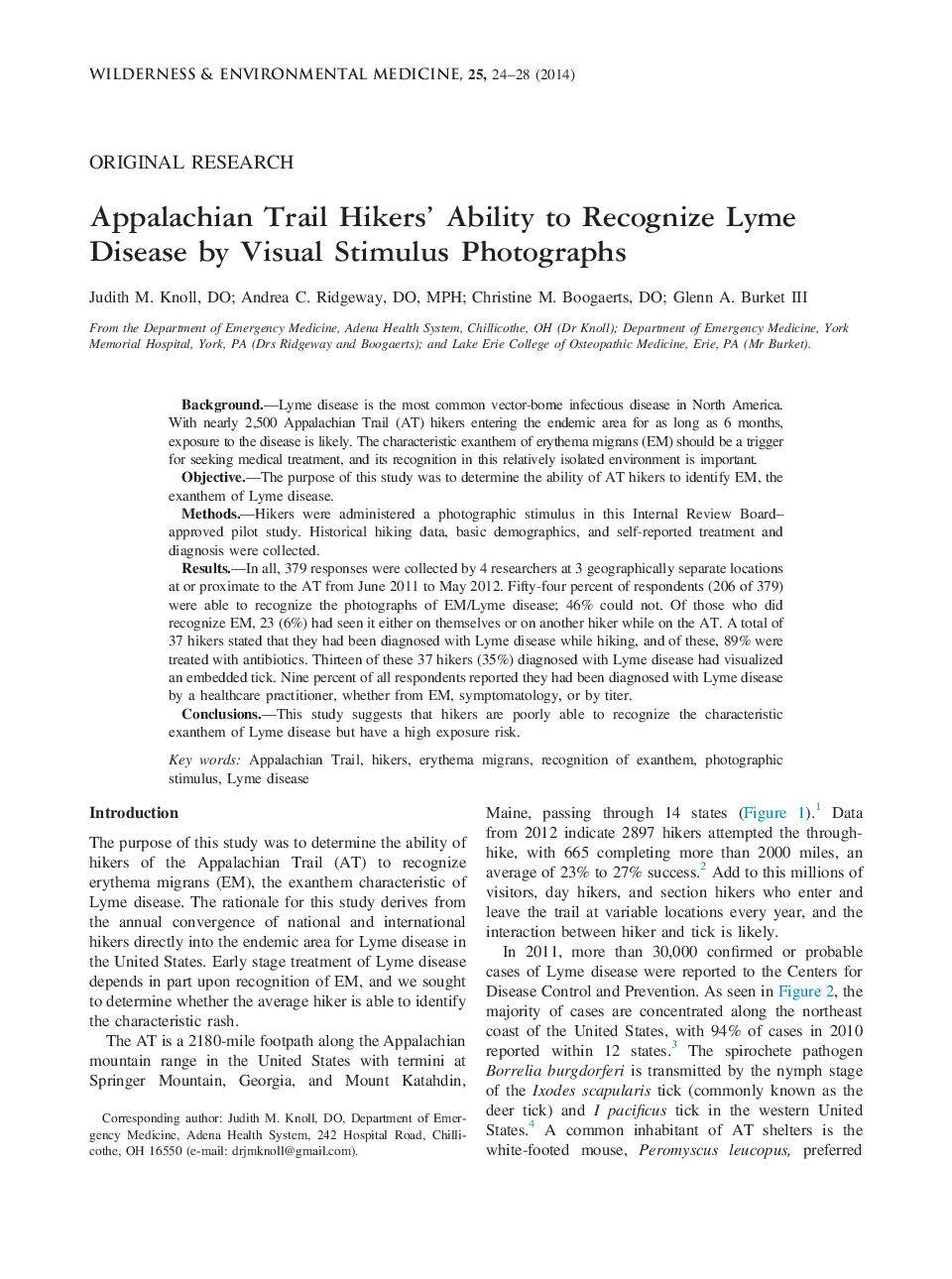| Article ID | Journal | Published Year | Pages | File Type |
|---|---|---|---|---|
| 2614140 | Wilderness & Environmental Medicine | 2014 | 5 Pages |
BackgroundLyme disease is the most common vector-borne infectious disease in North America. With nearly 2,500 Appalachian Trail (AT) hikers entering the endemic area for as long as 6 months, exposure to the disease is likely. The characteristic exanthem of erythema migrans (EM) should be a trigger for seeking medical treatment, and its recognition in this relatively isolated environment is important.ObjectiveThe purpose of this study was to determine the ability of AT hikers to identify EM, the exanthem of Lyme disease.MethodsHikers were administered a photographic stimulus in this Internal Review Board–approved pilot study. Historical hiking data, basic demographics, and self-reported treatment and diagnosis were collected.ResultsIn all, 379 responses were collected by 4 researchers at 3 geographically separate locations at or proximate to the AT from June 2011 to May 2012. Fifty-four percent of respondents (206 of 379) were able to recognize the photographs of EM/Lyme disease; 46% could not. Of those who did recognize EM, 23 (6%) had seen it either on themselves or on another hiker while on the AT. A total of 37 hikers stated that they had been diagnosed with Lyme disease while hiking, and of these, 89% were treated with antibiotics. Thirteen of these 37 hikers (35%) diagnosed with Lyme disease had visualized an embedded tick. Nine percent of all respondents reported they had been diagnosed with Lyme disease by a healthcare practitioner, whether from EM, symptomatology, or by titer.ConclusionsThis study suggests that hikers are poorly able to recognize the characteristic exanthem of Lyme disease but have a high exposure risk.
